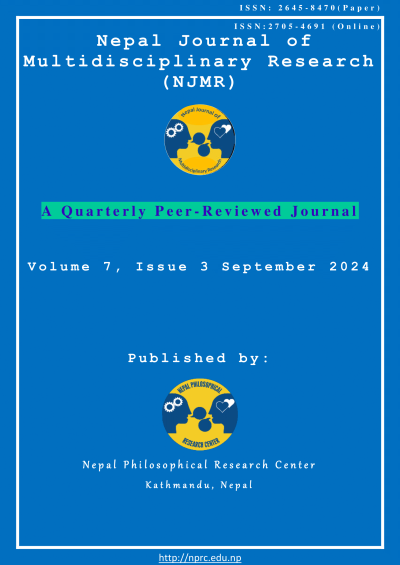Gender Perspective on Neutral Acceptance of Death: A Study of Nepalese Youth
DOI:
https://doi.org/10.3126/njmr.v7i3.70918Keywords:
Death attitude, Gender differences, Nepalese youth, Neutral acceptanceAbstract
Background & Objective: This study explores gender differences in the neutral acceptance of death among Nepalese youth. Neutral acceptance is defined as the recognition of death as a natural and inevitable part of life without judgment or strong emotions.
Methods: A cross-sectional, explanatory quantitative study was conducted among 196 college students using simple random sampling. Data were collected through the Death Attitude Profile—Revised (DAP-R), specifically focusing on neutral acceptance. The study employed statistical tests such as the Chi-Square test and independent samples t-test to assess gender differences in attitudes toward neutral acceptance.
Results: The findings revealed significant gender differences in neutral acceptance of death. Female participants exhibited a higher mean score (M = 4.23) compared to males (M = 3.93). Statistical analysis (p = 0.003) confirmed that females are more likely to adopt a neutral acceptance of death than males.
Conclusion & Recommendation: The study concludes that Nepalese females tend to exhibit a higher neutral acceptance of death than males, likely due to cultural and social factors that encourage emotional openness and caregiving roles. These findings suggest the need for further exploration of how gender influences death attitudes and coping mechanisms in Nepalese society.
Novelty: This research fills a gap in understanding gender-specific differences in neutral death acceptance, shaped by societal norms and cultural factors. The study provides insights into how male and female perspectives on death vary, offering valuable information for mental health, policy, and cultural discussions around death and gender roles in Nepalese society.
Downloads
Downloads
Published
How to Cite
Issue
Section
License
Copyright (c) 2024 The Author(s)

This work is licensed under a Creative Commons Attribution-NonCommercial 4.0 International License.
This license enables reusers to distribute, remix, adapt, and build upon the material in any medium or format for noncommercial purposes only, and only so long as attribution is given to the creator.




